How to Build a Scalable Link Building Process: What You Need to Know
Link building is arguably the most important aspect of every marketing strategy that companies should invest in on a continuous basis.
But where do you begin? How have the times changed since yesteryear when buying links was considered acceptable? How can you develop link building strategies that are sustainable and flexible?
Starting link building can feel very overwhelming and complex for novices and marketing pros alike. Fortunately, there are several link building tactics that people of all levels of expertise can put into practice.
But before looking at how to identify techniques and build a strategy, you need to know the why behind link building.
Table of Contents
Get the Guide to Go
In a rush? No worries – take this guide home with you now!
This guide will teach you:
- The best tools you need for link building and SEO strategies.
- How to improve the health of your link profile.
- Tips and tricks for beginners and experts alike.
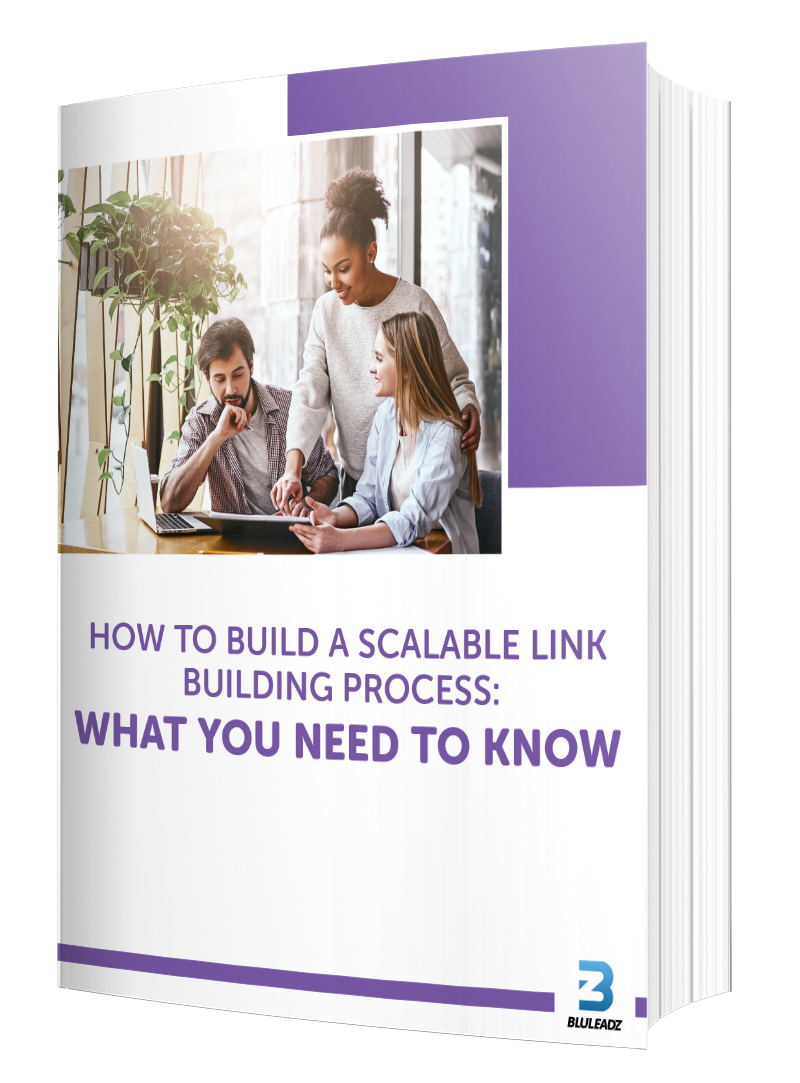
Download the Guide

1Why Link Building Matters Now More Than Ever Before
Leave it to Moz, one of the most popular marketing software companies and leading voice in the world of SEO, to define link building perfectly:
“Link building is the process of acquiring hyperlinks from other websites to your own. A hyperlink (usually just called a link) is a way for users to navigate between pages on the internet. Search engines use links to crawl the web; they will crawl the links between the individual pages on your website, and they will crawl the links between entire websites.
There are many techniques for building links, and while they vary in difficulty, SEO professionals (referred to as “SEOs”) tend to agree that link building is one of the hardest parts of their jobs. Many SEOs spend the majority of their time trying to do it well. For that reason, if you can master the art of building high-quality links, it can truly put you ahead of both other SEOs and your competition.”
Moz also provides an excellent visual aid to show the anatomy of what makes a link.

The “a” at the beginning tells search engines that a link follows, indicating a relationship to whatever destination the link goes to.
Following the “a” is “href,” which stands for the term hyperlink referral. This portion within the quotation marks between the equals sign and “>” showcases what URL is being pointed to by the link. If you see a # sign, that shows a local link, so you will be taken to a different page section.
The next portion of the link is the anchor text of the link. This is what users read and click on to follow the link. Finally, at the end is the “</a>,” which tells search engines it’s the end of the link tag.
Why Link Building Matters In the Modern Digital World
The way you build links equally serves both search engines and the humans you’re building an experience for.
Search engines use links to discover new webpages and determine how a page should rank in results for a user query. They crawl your site pages, extract content, and index them to identify ranking potential.
The theory behind linking is that a link to your website acted as a vote of confidence about a particular page. But it got more complex once SEOs started trying to over optimize.
Now, there are many factors impacting ranking on Google, including domain level link features, page-level link features, page-level keyword, content features, and many more.
This is where the term “link equity” comes into play. It is a search ranking factor that shows a transfer of authority and value from one page to another.
To determine if a link actually passes equity, you need to consider the following:
- The relevance of the link
- The location of the link on a webpage
- The number of links located on the page
- The HTTP status of the linked page
- The crawlability of the link
- If a link is nofollow or follow
In terms of how links serve humans, they help by referring readers to other content that would be valuable. Your visitors can gain insights on a related topic if you’re linking them to additional resources.
As you can see, there are several advantages to link building for delivering a great experience for your visitors and for improving your search ranking potential.
For businesses, this means more opportunities to gain referral traffic, raise brand awareness, build meaningful relationships within their industry, earn more authority in their space, and even boost conversion rates.
The first step to getting your link building off the ground – assembling tools that best fit your needs.

2Your Link Building Toolkit
There are plenty of awesome link building tools to guide you through your link building strategy. Let’s look at the best of the best:
Ahrefs
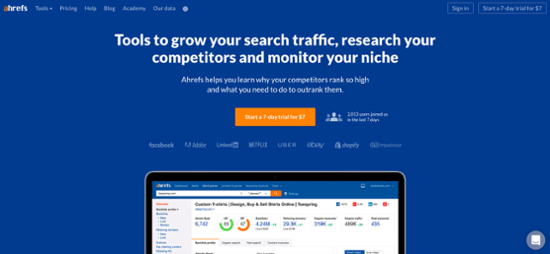
Pricing: $99 – $999 per month
One of the most respected software suites for SEO experts, Ahrefs has it all. Some of the best tools and features include:
- Site audit
- Rank tracking
- Keyword research
- Link checker
- Content gap
What really sets Ahrefs apart from others on this list is the fact that they have the biggest backlink index.
BuzzSumo
Pricing: $79 - 499 per month
Another excellent tool for amplifying content and building links, BuzzSumo is a must have. Stay informed on what content is resonating with your audience and discover what kind of content is being shared extensively.
You can also find and connect with influencers, which helps with boosting brand awareness and building backlinks through influencer marketing.
Moz
Pricing: $99 – $999 per month
When it comes to SEO tools, it’s hard to ignore the influence of Moz. The Moz Pro suite is extensive and covers all the bases for link building. The most noteworthy features include:
- Keyword research
- Site crawl
- Link research
- Rank tracking
In terms of your link building strategy, you can use their link profile analysis to better understand your site’s authority and rankings. The analysis measures your backlinks, anchor text, linking domains, and more. This sheds some light on the most impactful linking opportunities.
BuzzStream
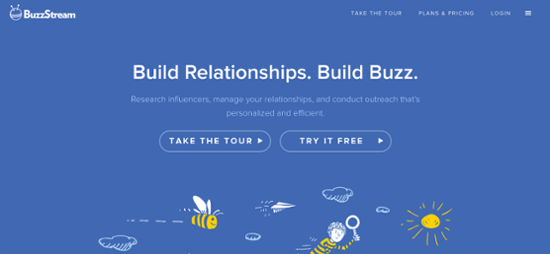
Pricing: $24 – $999 per month
When it comes to conducting link building campaigns, BuzzStream simplifies everything. You don’t have to juggle random email messages and spreadsheets.
Within the tool, you can build a prospecting list, identify influencers, build robust outreach email campaigns, track your projects and your ongoing relationships, and build reports to dig deep into insights on your outreach campaigns.
JustReachOut
Pricing: $697 – $2497 per month
Investing in PR software is a big step and can be pricey, so you want to make sure you’re making the most of it. Fortunately, JustReachOut offers both software and expert advice from their team of outreach strategists.
You start with a strategy call, then work with your strategists to build a list of targeted journalists and influencers. The last step of the process is sending targeted email pitches. This tool truly has it all.
HARO
Pricing: Free – $149 per month
Help a Reporter Out (HARO) is for both journalists and sources. As a source, you join a huge community of users and can directly connect with journalists.
Every day, you get three emails that are requests for your specific expertise. You simply answer the questions being posed and wait to hear back. This is an excellent tool for link building beginners and veterans alike.
ProfNet
Pricing: Free to use. Fees may apply.
A more passive approach to PR, ProfNet is similar to HARO in that it connects experts with journalists and bloggers. The difference is that as an expert, you create a profile, set preferences, and wait for relevant media leads to contact you.
This is another powerful aspect of PR that can really add value to your link building strategy. Connection is vital to link building, and ProfNet is the go-to resource for building connections and maintaining positive relationships with reputable media sources that need your help.
NinjaOutreach
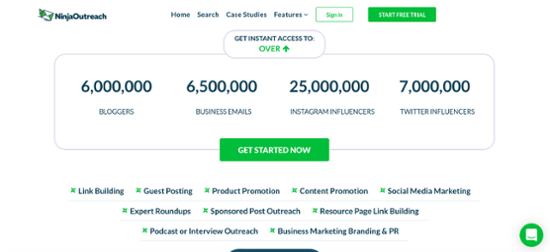
Pricing: $99 per month
Another amazing outreach tool. NinjaOutreach simplifies many aspects of link building. It acts as an all-in-one email marketing tool and a robust database of influencers.
You can personalize mass email templates and manage your list of business leads through its CRM. In terms of link building, this tool makes managing your guest blogging campaigns easier than ever before.
Pitchbox
Pricing: Custom plans available.
Pitchbox is another excellent outreach platform. You can use it for prospecting relevant bloggers and influencers, customizing outreach messaging, and optimizing your entire strategy through their workflows feature.
What’s also great about this tool is that it comes with a great selection of campaigns, like blogger outreach, competitor backlinks, link removal, and product reviews.
Monitor Backlinks
Pricing: $26 – $149 per month
The name says it all. Monitor Backlinks is exceptional for, you guessed it, monitoring backlinks and keywords. You can use it for identifying your best bets for adding high-quality links, managing influencer relationships, disavowing spammy backlinks, recovering lost links, and much more.
The tool pulls link data from trusted resources, like Majestic and Moz, and organizes it in an easy-to-read dashboard. Generally speaking, this is a great option for SEO newbies who are looking to build backlinks. Speaking of Majestic…
Majestic
Pricing: $49.99 – $399.99 per month.
Touted as the largest link index database in the world, Majestic stands tall in the world of SEO. The data is updated several times per day, so you’re never looking at outdated information.
Their visual reporting tools make it really easy for you to see exactly where to concentrate on link building.
Ontolo
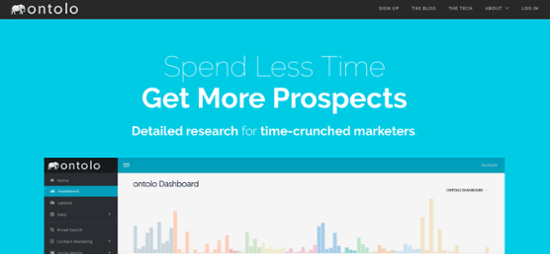
Pricing: $97 – $297 per month.
When you’re prospecting for link building opportunities, it’s hard to find a better tool than Ontolo. This tool provides a fully detailed analysis of your prospects, including their social account information, URLs associated with the contact, and much more.
This is a must-have if you find yourself spending way too much prospecting and managing your contacts.
Muck Rack
Pricing: Varies
Muck Rack is the ultimate PR software tool. You can organize and manage your lists to streamline relationship building with journalists, blogger freelancers, and more.
Their reporting feature is immensely helpful because you can track and manage every link building tactic and adjust your campaigns accordingly.
Finding the Tool That Best Suits You
With so many choices, finding the right tool for you can be overwhelming. As you evaluate all of these options, keep the following in mind:
- Your monthly or quarterly budget
- The features you absolutely need right now
- The initiatives you’re currently prioritizing
Use free trials as a testing ground to narrow down your choices and make the best decision.
Don’t want to spend too much? Here’s a simple hack: Sign up for a short commitment (like one month) and use the tool to work ahead. For example, use the tool to build out your strategy and a prospect list for link building for the next quarter or two, then cancel the service until you need it again.

3Understanding Your Link Profile
You need a starting point before you dive deeper into link building campaigns. Your link profile is the best place to begin.
What’s a Link Profile?
Your link profile consists of all the links that are directing visitors to your site. When you’re looking at your link profile, you’re really looking at the entire makeup of these backlinks.
A healthy link profile should consist of links that are:
- From high authority sites, typically those that have a domain authority (DA) that’s higher than yours.
- Not broken.
- From a wide variety of sites, not just from a few other domains.
- Relevant to the audience visiting your page.
In other words, you need to evaluate backlinks to determine the quality of them. And the basic rule of thumb in the SEO world is simple to keep in mind:
High-quality links don’t just occur incidentally. They require ongoing, deliberate effort.
Let’s look at the most important metrics you can assess to grade link quality.
Authority of the Linking Domain
You don’t want links to your website from spammy, questionable online resources. This is why it’s so important to evaluate the strength of each linking domain.
Domain authority (DA) comes in to play here. Moz uses a scoring scale from one to 100 to qualify a domain’s overall authority, which is a predictor of how well the website ranks on search engine results pages (SERPs).
The score is generated based on the following criteria:
Linking root domains
Number of total links
Keep in mind that DA is meant to be used as a comparative metric. So the ultimate goal is not necessarily to boost your DA over time and eventually earn the coveted score of 100.
Your real goal is to earn a higher DA compared to your competitors within your industry and who are on the same level as you (in terms of the size of your organization). In other words, strive to gain a higher margin over time between your DA and your competitors’ DA.
To accomplish this, you want to earn more backlinks from higher DA outlets than the amount your competitors are earning.
Relevance to Humans (and Search Engines)
Search engines continue to focus on user intent. So, if your manufacturing website gets a backlink from a food blogger, that link doesn’t deliver much quality.
Remember, a link is a vote of confidence in another piece of content. It should deliver more value to the reader. If it’s randomly added, it does nothing for your link profile.
Search engines can determine semantic relationships and identify when links are relevant and align with the interests and intent of the user who is visiting particular webpages.
Step into the shoes of the reader. If you’re reading a food blog, how much will you care about automobile manufacturing technology? Likely not much at all.
This is why regularly assessing your backlinks is crucial for ensuring the health of your link profile. You want to confirm that links to your website come from relevant sources.
Technical Aspects
You can’t afford to overlook the technical side of backlinks. Here are the most important technical elements to assess:
- Tag attributes
- Link placement
- Anchor text
- Crawlability
- Indexation
With all this in mind, you’re ready to conduct a full link profile analysis.
How to Conduct a Link Profile Analysis
Depending on what tool you use, your analysis process should be relatively simple. It can feel overwhelming the first time you do it, but once you understand what you’re looking at, you’re ready to streamline analysis on a consistent basis.
Your ultimate goal of a link profile analysis is to accomplish the following:
- Get a snapshot of the health of your link profile right now.
- Identify lost and broken links you can fix.
- Gain a full perspective of the types and locations of your backlinks.
- Find areas of opportunity to gain ground on your competitors.
- Track your link building progress over time.
The first step in conducting your analysis is selecting a tool from the toolkit we covered in chapter two. Once you select a tool, you’re ready to get a high-level overview of your link profile.
Most tools include an overview style report and dashboard for users. These dashboards give you a look at some of the most important big-picture metrics, including your DA, page authority (PA), number of linking domains, number of inbound links, and the number of keywords you’re ranking for.
In the Moz Link Explorer tool, you also get a look at the following:
- Discovered and lost linking domains
- Tracking of DA, PA, and linking domains
- Follow vs. nofollow links for internal and external linking
- Top followed links to your site
- Top pages on your site
- Top anchor text for your site
- A breakdown of the DA of all your linking domains
This information can give you a good idea of where you stand on your own.
Depending on the tool you’re using, you can also see important trends, like backlink acquisition rates over time. This information provides several insights, including:
- How fast you’re building links, which you can compare to your competitors.
- Link spikes, which can indicate an influx of spammy backlinks.
- A look at top anchor texts, where you can find potentially spammy backlinks.
Depending on what you find in your overview report, you’re well prepared to dive deeper into certain aspects of your profile. For example, you can fix broken links and 404 errors you uncover in your analysis.
Speaking of fixing issues in your link profile, this leads into the next step in link building – cleaning your profile.
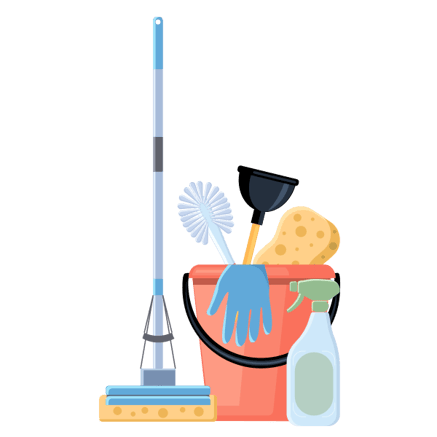
4Cleaning Up Your Links
Once you complete your analysis, you’re ready to identify all your bad backlinks and address them.
Why is this important? Not only do low-quality backlinks hurt your profile, but they might lead to Google penalizing you. If your link profile appears unnatural, Penguin (Google’s algorithm update they launched in 2012) will devalue links, which might lead to you receiving a manual action from the big G.
A manual action happens when a human reviewer at Google determines a page (or multiple pages) on your site doesn’t comply with webmaster quality guidelines. In short, these can really hurt your site health.
It might be time to consider disavowing links. When you disavow a link, you’re telling Google that you don’t want that link from an external site to be considered as Google counts your links.
That’s not to say you absolutely have to disavow links. The best rule of thumb when it comes to interpreting links for quality is this:
Does the link serve any other purpose outside of SEO? Will the link deliver value to my visitors?
If you decide to start disavowing links, you’ll need to brush up on Google’s Disavow Links Tool.
What Is Google’s Disavow Links Tool?
Launched in 2012, this tool is great for helping you clean up any negative SEO. But be warned – disavowing can have a significant impact on your SEO, so proceed with caution.
Google makes it clear upfront to anyone considering link disavowal.

Treat this as your last resort. Before using Google’s tool, try manually requesting link removal. To do this, contact the site owner and ask them to remove your link from their site.
Keep this mantra in mind before proceeding: Removal request first. Disavowal second.
How to Disavow Links
Start by building a list of questionable and irrelevant backlinks. Then, manually assess them to ensure all of them need removal.
Add your finalized disavowal list to a document and save it as a text file with a .txt extension. If you can’t get these links removed manually from the site owner, simply upload your .txt file to Google’s Disavow Links Tool and submit it.
Make sure you’re patient. Google notes, “It can take a few weeks for Google to process the information that you upload. Your list will be incorporated into our index as we recrawl the web and reprocess the pages that we see.”

5The Dark Side of Linking
Black hat link building has been around for ages. But fortunately, Google’s Penguin update in 2012 addressed companies engaging in manipulative link schemes. It also addressed ongoing black hat SEO tactics, like keyword stuffing.
For websites continually using black hat linking, Google will send a penalty, which can have a major impact on your organic search and rankings for weeks and even months. You can get a manual penalty or an algorithmic penalty.
A manual penalty is delivered by someone at Google. You will receive a message in Google Search Console. Algorithmic penalties target sites that use spammy linking tactics, like shady guest posting.
Here are some examples of black hat strategies you want to avoid to prevent being penalized:
Spam Comments
This is one of the oldest tricks in the book. Users will simply leave comments on high traffic pages with the intention of earning free backlinks. Some people will automate this process, essentially distributing spammy comments with backlinks to numerous pages.
If your site is being spammed in comments, you need to keep up with it. They look unprofessional and make it seem like you’re neglecting your community.
Paid Links
This tactic is classified as black hat because it often results in low-quality content. Think about it: You pay a webmaster and send them the exact anchor text and dofollow link you want them to add.
Once the payment is made, who knows what that content will look like? Most paid backlinks are not putting the reader first; they’re often a thin attempt to “game the system.”
Article Spinning
This is similar to creating duplicate content, a popular black hat SEO tactic. Content creators will write an article, put it into special software to “spin” the words into rephrased content, and post these similar posts in spam blogs or directories.
The goal is to earn a lot of backlinks with writing just one post, but the negative consequences far outweigh the potential short-term benefits.
Blackhatters are still widely prevalent in the digital marketing world. Stay informed on the black hat techniques so you know what to avoid.
To earn some real SEO wins that yield long-term results, focus on the techniques that actually work.

6Link Building Techniques for Beginners
There are plenty of awesome link building techniques that don’t fall under the dark hat side. When you invest time and resources into building backlinks, you want to make sure you’re approaching it in a sustainable, fair way.
White hat link building techniques can take you to the next level. These techniques are fundamental to your link building because they are in line with webmaster guidelines and focused primarily on the human audience, not just search engines.
They’re long-term investments that pay off with results over time, whereas black hat practices are often penalized and don’t drive results in a sustainable way.
Let’s look at some tactics that are good for when you’re first starting out:
Directories and Resource Pages
There are two areas to focus on using this technique. Let’s begin with link directories.
Essentially, a directory is an online list or a catalog of websites that organize businesses or people into categories and include contact information.
Unfortunately, in the pre-Penguin era, there were a lot of bad apples in the digital world, making spammy, low-quality directories the norm and tainting the concept of them.
But there are still plenty of high-value directories that can fit into your link building strategy. Look for ones that are relevant to your niche, well organized, stick to high standards, built around a specific purpose, kept up to date, and most importantly focused on the reader, not merely aimed at the search engines.
The process of applying to link directories is often pretty straightforward.
- Research and find reputable directories that fit your target audience.
- Within each directory you vet, choose subcategories that you align with.
- Read through their guidelines and tailor your submission to fit them.
- Submit your site for consideration.
Note: You can usually spot a low-quality directory pretty quickly. If they have a high acceptance rate, offer “premium” sponsorships for an upcharge, request reciprocal links from you, or are overly generalized, you should avoid them.
Resource pages exist for the sole reason of building links out to external resources. They typically link out to content based around a specific topic.
Your approach to resource pages is similar to how you build links with directories.
- Use searches like “keyword + resources” or “keyword + useful links” to find pages that fit your topics.
- Assess each resource page’s level of authority using tools like Moz and Ahrefs. Moz shows you domain and page authority, and Ahrefs provides URL ratings and domain ratings.
- Compile a list of resource pages, plan which pieces of your content align with each page, then email each page with an outreach message, highlighting how your content would add value to the page and their audience.
As with most link building techniques, reaching out will often require follow-ups. So don’t just send one email and hope for the best. Make sure you’re following up with polite requests until you get a no or yes.
Guest Blogging
This one is pretty self-explanatory, but the process of becoming a guest contributor with a reputable, relevant guest outlet is more nuanced than simply sending the same repurposed blog posts to dozens of different contacts.
Matt Cutts, a prominent figure on Google’s webspam team, famously said, "Stick a fork in it: Guest blogging is done." This is a reaction to the majority of guest bloggers who automate guest submissions, which lead to low-quality content.
Google continues getting better at devaluing links from guest bloggers who are clearly creating content solely to build backlinks. This is why you need to be clear with yourself when you’re creating a guest blogging strategy: Your priority is creating awesome content to educate your audience in outside outlets. Sure you’ll likely get a backlink from the post, but keep your audience as your top priority.
The best place to start with guest blogging is finding outlets your audience frequents, then evaluating their content. Look for gaps you can fill with your expertise, then either contact each outlet with a pitch for an idea or submit a completed post. Your outreach depends on the outlet’s guest posting guidelines.
Other notable beginner techniques include:
Email People You Mention
Contact people you mention in your content via email to send them a link to your post, and encourage them to share it via social media.
Participate in Q&A Sites
Answer questions on sites like Quora to link to your site. While most of these sites only allow nofollow links, this is still a good method for driving traffic and improving brand awareness.
Create Your RSS Feed
Start a feed through your CMS. This helps to build links when sites scrape your content because they can find your content via your feed.
Linking Out
As you create content, you’re going to be using external links. You might link to videos, related content from other websites, reports you’re citing for stats, and more.
This is an easy, quick win for you. Once you link out, simply contact the person or brand you’re linking to and tell them that you gave them a backlink.
At the very least, this builds relationships you can continue to nurture. Best case, they’ll start linking to you where it’s relevant.

7Link Building Techniques for Experts
As you continue building links, you will become more comfortable with outreach and build a strong network of industry thought leaders to work with.
This is when you’re ready to take a stab at the following advanced techniques:
Giveaways
If you’re selling a service or product, host a promotional campaign with a giveaway component.
Simply reach out to your network within your industry and contact influencers who regularly host contests.
Create an agreement and a plan, then launch that contest giveaway to generate a ton of exposure.
Broken Link Building
This is an exceptional technique that takes a little legwork upfront but can yield amazing results. Follow these steps:
1. Identify relevant broken links on targeted websites.
This research process can be a bit of a time sink, but it will help immensely throughout your broken link building strategy.
Begin by finding websites that you want links from. Build a list of targeted sites that are relevant to your brand and that attract your ideal audience. For example, if you’re a wellness company, you should start searching for relevant, high-authority sites within that niche, like mindbodygreen, Greatist, and Yoga Journal.
If you’re in a crowded industry, break your spreadsheet of targeted websites into tiers based on the site’s domain authority (or domain rating, depending on what metrics you’re using to assess a site’s link popularity and level of authority). Your lower tiered sites might be quicker wins for you to pursue.
Within a targeted site, look for broken links within their popular webpages, like a top performing blog. You can find broken links in no time using a tool like Broken Link Checker or Check My Links.
2. Dig deeper into the broken link.
Chances are, that broken link you find is likely being linked to by other sites. You can find what other sites are linking to the broken page by using Ahrefs Site Explorer. This will give you a list of other sites that may be willing to swap their dead link out for yours.
3. Create and send a new, better resource.
A broken link gives you a great idea of what kind of content you should send their way. Ideally, you’ll already have an awesome piece to email the website owner.
But if not, you can create a comprehensive post based on the broken webpage being linked to. To find what the dead page looked like, tap into the Wayback Machine to find what content was on that page previously. Then, expand on it to create a kickass new piece.
4. Start your outreach.
Find contact information for each of the sites and send an email with a link to your new content. Use this message to do the following:
- Introduce yourself as an authority.
- Express your appreciation for the recipient’s content.
- Show them where the broken link exists (use a screenshot for context).
- Send a link to your new piece of content, highlighting its value.
- Request that they switch out their broken link with yours.
The Skyscraper Technique
The concept of this technique is simple on paper, but it can be tough to create lasting results. The structure of this technique is as follows:
1. Target relevant content that has a ton of backlinks.
Use a tool like Ahrefs Site Explorer to find a relevant post within your space that has a lot of backlinks. For example, if you work for a steel manufacturing company, enter one of the most popular sites in your industry. Then look at the best by links report to find pages on the site with the best link authority, which you can sort by referring domains.
Let’s say you find that your competitor has a ton of links on a blog post on the most common steel compliance regulations. From this, you can brainstorm ideas to make something bigger and better, like a comprehensive guide to compliance regulations.
2. Run with it – make a piece that is far superior.
Base your content off of the competing piece and ask yourself, “How can I deliver the best piece of content on this particular topic?” So, if the other piece offers 10 tips, list out 20. If they link to reports from 2009, find newer resources.
But keep in mind: a higher word count or more tips or better graphics don’t necessarily make your content “better.” The true measure of quality falls on aspects that add more value for the reader, plain and simple.
Outline your “skyscraper” post, then get to writing!
3. Reach out with a hard push to add your new links.
This shouldn’t be a huge sales pitch. Face the facts: your content is far superior and more in-depth than your competitor’s piece. So, using the Site Explorer’s backlinks report, you can find all the sites linking to your competitor’s article.
Then, start reaching out. This may mean contacting dozens or even hundreds of websites. It’s a numbers game, so don’t get discouraged if you only get one backlink for every 50 emails you send.
Your best chance for earning links is using your email message to highlight what sets your content apart from your competitor’s content. Show them how your post will better serve their readers.
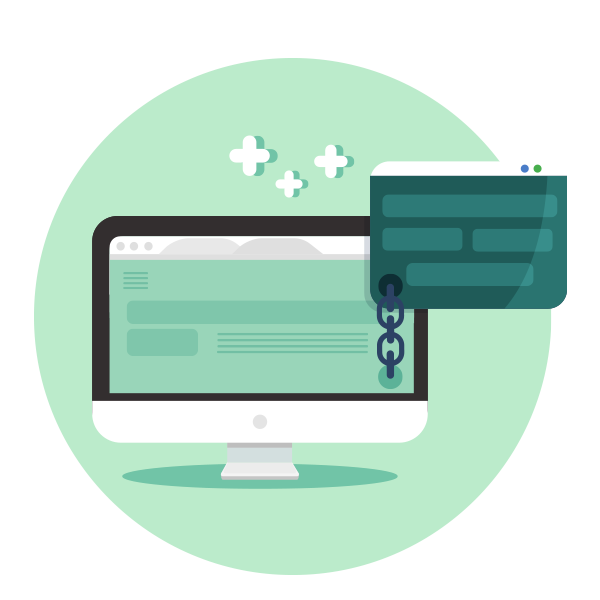
8Putting It All Together in a Campaign
Now that we covered why linking building matters, what tools you should use in your link building efforts, how to take account of your current link profile, and the techniques to use and avoid, we are finally ready to dive into how you can put all of this together.
Where does every digital marketing initiative start? You guessed it right…
Setting Your Goals
At the start of your link building campaign, you need a clear definition of success. But don’t just settle for some shallow objective, like “build 20 links.”
A truly effective goal for link building is SMART and tied to the bigger picture. Those big-picture goals could be tied to improving your search rankings, boosting organic traffic, generating more leads, and the like.
Gathering Your Link Building Assets
Your list of assets is what you’re going to use to generate backlinks. Most of the time, this will be pieces of content, like your pillar pages, blog posts, videos, etc.
But your other assets might include products, services, data, and people on your team who have influence.
With your assets in mind, map them out to specific audiences you want to attract. You can build out specific campaigns targeted at unique outlets and specific people you want links from.
Building a Diversified Link Building Campaign
Your link building campaign should include a variety of tactics that align with smaller goals that are mapped to big-picture objectives. For example, your campaign might look something like this:

9Glossary of Link Building Terms to Know
The world of link building can be daunting. Brush up on these commonly used terms to better educate yourself.
A
Anchor Text
The content that is located within the anchor element. It shows where a piece of content is pointing. The href attribute within the anchor text is where the target of the link is noted.
B
Backlink
Also referred to as inbound links, these are links that point from one website to another, indicating a vote of confidence from the linking site.
Broken Link
A link on a webpage that doesn’t work, likely caused the following issues:
- The webpage being linked to was removed (read as a 404 error).
- A URL was incorrectly entered.
- Software is blocking access to the webpage being linked to.
- The website owner restricted access from external sources.
- The website being linked to was moved or has been shut down.
C
Crawlability
The ability of search engine bots to crawl through all text content on a website and to move through every webpage without any errors or issues.
D
Deep Link Ratio
A percentage indicating how many links go to your subpages compared to your homepage.
Disavow Links Tool
The Google Search Console tool used to tell search engines which links to ignore within your backlink profile.
Dofollow Links
The default nature of links that ensures search engine bots are able to crawl links. These are the contrast of nofollow links (defined below). They have an impact on search engine ranking potential.
Domain Authority
A search engine ranking score that Moz created to estimate the ranking potential for a website. It is scored on a 100-point logarithmic scale.
Domain Rating
A metric developed by Ahrefs to indicate how strong a target website’s backlink profile is based on the size and quality of its profile.
E
External Links
Hyperlinks pointing to a domain outside of the domain that link exists on.
H
Hidden Link
A link that was coded intentionally to not appear as a link to the user, which is deemed deceptive and can result in Google penalties.
Href
An HTML attribute of an anchor tag. It contains two components:
- The URL (the actual link)
- The anchor text
I
Inbound Link
Another term used to describe a backlink, which is a hyperlink that points to a webpage on another domain.
Indexation
The process of adding webpages into Google search. Google crawls sites and indexes your pages, unless you add a no-index tag.
Internal Link
A link from one webpage to another page within the same website.
K
Keywords
The words and phrases you’re using that you want to rank for in search engine results pages (SERPs).
L
Link Equity (aka Link Juice)
A search engine ranking factor indicating that links pass value and authority from one page to another page. The value of equity is based on several factors, like how authoritative the linking page is and the relevance of the link.
Link Profile
The makeup of links that direct visitors to a website. Strong link profiles are diversified and include backlinks from high-authority sites.
Link Velocity
The rate of speed of link growth to a webpage or domain.
N
Nofollow Link
A value that can be assigned to the rel attribute of an HTML element that tells search engines to ignore the link. It includes a “nofollow” HTML tag. Nofollow links don’t help search engine ranking potential, whereas dofollow links do influence ranking potential.
P
Paid Links
Links that are acquired by payment to benefit the paying website owner. This is considered problematic and can be a violation of Google standards.
Panda
Launched in 2011, this Google algorithm update addressed common SEO issues like thin and duplicate content, lack of authority, content farming, high presence of ads, and more black hat SEO tactics that previously worked.
Page Authority
A score created by Moz that acts as a prediction for how well a specific page will rank on SERPs. Just like domain authority, it’s scored on a 100-point logarithmic scale.
Penguin
Rolled out between 2012 and 2016, this Google algorithm update aimed at rewarding high quality websites and preventing sites using keyword stuffing and link schemes from ranking high.
Q
Query
The questions or phrases users put into search engines to find relevant solutions.
R
Reciprocal Linking
The process of linking to a website linking to another website that has already linked to them.
Referral Traffic
The method of reporting visits that came to a website from external sources, as reported in Google Analytics.
Rel
The attribute that specifies to search engines how pages relate to one another.
Root Domain
The highest hierarchical level of a site, separated from the top level domain by a dot.
Rot
Describes the situation when links point to webpages that aren’t available and are not properly redirected.
S
Search Console
Google Search Console is a free web service that helps webmasters monitor and manage their site’s presence.
Semantic Relationship
In terms of SEO, this refers to the meaning or essence of words and the logic behind them. Search engines are better at understanding searcher intent to deliver relevant content that has contextual meaning.
SERPs
Stands for search engine results page, which is the page displaying top results for search engine queries.
Sitewide Links
These appear on every page of a website. For example, links located in the sidebar or footers.
Social Signals
Signs indicating that webpages are performing well on social platforms, which may impact search ranking potential.
Spam Links
Irrelevant, low quality links that are only placed to improve rankings. Ultimately, they lead to poor user experiences.
U
Unnatural Links
Artificial links that are intended to manipulate ranking potential, often created by scrapers or spammers. These can hurt your SEO.
URL
Aka Universal Resource Locator (URL), this is the address of internet resources (duh).
W
Webmaster
The person responsible for maintaining a website.
Webmaster Tools
This was the original name of Google’s service (now called Search Console, see above).

10Get Started Building Links!
Congratulations! You’re ready to start building a stellar link profile for your website and business.
Your link profile is more than just a box to check off. It yields several benefits over the lifetime of your website. Some of the most notable advantages include:
- Brand awareness – the more mentions and links to your company, the more visibility you gain with other audiences.
- Traffic – these backlinks drive referral traffic to your site, which can turn new visitors into returning visitors and, over time, advocates for your brand.
- Ranking potential – readers aren’t the only ones appreciating your authority; search engines will too, and that gives your content better chances of climbing SERPs.
Keep these advantages top of mind as you execute your link building strategy. This will help you stay motivated as you continue improving your link profile.
Remember these key takeaways as you venture into the world of link building:
- Stay true to the integrity of your business.
- Build links for readers first; search engines are always second to the reader.
- Play by the rules to drive sustainable growth.
- Establish yourself as a community staple.
